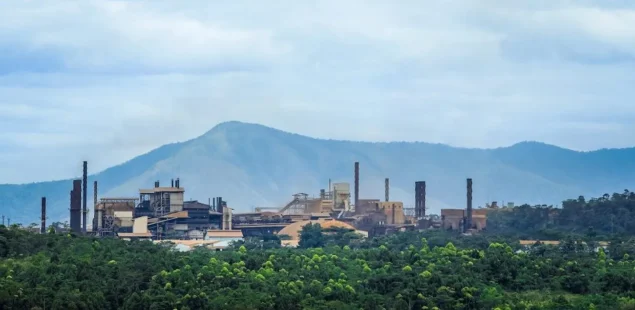
Current Aluminum Price Trends
The aluminum market in 2025 reflects ongoing volatility shaped by energy prices, geopolitical tensions, and shifting industrial demand. As of Q2 2025, aluminum prices on the London Metal Exchange (LME) are averaging around $2,300 per metric ton — a modest recovery from the lows of late 2023.
Recent fluctuations are driven by:
- Moderating energy prices, particularly in Europe, which has allowed smelters to restart production.
- Steady demand from aerospace and packaging sectors, offsetting weaker construction activity in China.
- A strong US dollar, putting downward pressure on commodities priced in USD.
In parallel, aluminium news highlights contrasting regional dynamics. While Europe and North America are experiencing demand normalization, India and Southeast Asia continue to expand consumption, supported by infrastructure development and industrial growth.
Global Supply and Demand Dynamics
Aluminium supply is heavily concentrated, with China accounting for more than 55% of global primary production. Other key producers include India, Russia, Canada, and the UAE. In 2024, global aluminum production reached approximately 69 million metric tons, with secondary (recycled) aluminum accounting for over 33%.
Demand remains broad-based across:
- Construction and infrastructure (especially in Asia).
- Automotive sector, increasingly using aluminum for lightweight EVs.
- Packaging, driven by sustainability trends.
- Aerospace, with a rebound in aircraft production post-COVID.
However, smelting is energy-intensive, making the industry highly sensitive to electricity costs. In 2022–2023, high power prices forced multiple smelter closures in Europe, contributing to supply tightness. Although capacity has gradually resumed, tight margins continue to challenge high-cost producers.
Global aluminium metal news also emphasizes growing interest in circular economy models, with scrap-based production gaining momentum due to lower emissions and costs.
Impact of Geopolitical Events
Geopolitical risks remain a central theme in the aluminum market. Sanctions on Russia — a major aluminum exporter via Rusal — have disrupted trade flows, particularly in Europe. While direct bans have been limited, Western consumers have shifted sourcing to avoid reputational and compliance risks.
Trade policies are also in flux. The U.S. has extended tariffs on Chinese aluminum products, while promoting domestic smelting through the Inflation Reduction Act. Meanwhile, China is investing in overseas bauxite mining and alumina refining to secure long-term input supply.
These developments have fragmented global trade and contributed to regional price disparities. For example, premiums in the U.S. Midwest remain elevated due to logistical constraints and reduced imports.
Aluminum news frequently reports on these shifts, as geopolitical realignments increasingly dictate supply chain decisions and price forecasts.
Technological Innovations and Sustainability
The aluminum industry is under pressure to decarbonize. With primary production generating significant CO₂ emissions (up to 12 metric tons per ton of aluminum), innovation is critical.
Key developments include:
- Inert anode technology, under development by Alcoa and Rio Tinto, which eliminates carbon emissions during smelting.
- Hydropower-based smelting in Canada and Norway, offering lower-carbon aluminum alternatives.
- Expansion of recycling infrastructure, especially in Europe and the U.S., where regulatory incentives support secondary production.
Sustainability concerns are also reshaping consumer demand. Automotive and electronics OEMs are increasingly seeking low-carbon or recycled aluminum, creating premium segments in the market.
This transformation is a recurring theme in aluminum metal news, as producers compete to secure ESG-compliant supply chains and align with climate targets.
Future Market Outlook
Looking ahead, the aluminum market outlook is cautiously optimistic. Analysts forecast a balanced or mildly undersupplied market through 2026, with prices expected to remain in the $2,300–$2,600/t range.
Key trends shaping the future include:
- Ongoing green infrastructure investment, boosting long-term demand.
- A structural shift toward recycled aluminum, reducing dependence on primary smelting.
- Regulatory incentives and climate policies supporting clean production.
- Potential supply disruptions from geopolitics or energy market shocks.
According to CRU Group, aluminum demand is set to grow by 3% annually over the next five years, with transportation and renewables as primary drivers. Meanwhile, Wood Mackenzie highlights a potential deficit of low-carbon aluminum, which could create differentiated pricing structures.
As aluminum news continues to spotlight these transitions, market participants are advised to monitor developments in energy, trade, and sustainability for investment insights.
FAQ
What is going on with aluminum?
The aluminum market is navigating a recovery phase following recent supply disruptions and price corrections. While energy costs and geopolitical issues continue to impact production, demand remains resilient across key sectors like transportation, packaging, and construction. Prices have stabilized but remain sensitive to macroeconomic and trade developments.
What is the prediction of aluminium market?
Most analysts predict moderate price increases over the next 12–24 months, with the market supported by green energy demand and supply discipline. The average forecast for 2025 is around $2,500/t. Premiums for low-carbon aluminum are also expected to grow as ESG compliance becomes more critical for buyers.
What is the future of aluminium?
Aluminium has a strong long-term future due to its lightweight, corrosion resistance, and recyclability. It is central to low-carbon infrastructure, electric vehicles, and circular economy strategies. As technologies advance and climate policies tighten, aluminum’s strategic importance is set to grow substantially.
Why is there a shortage of aluminum?
Aluminum shortages have stemmed from energy-driven smelter shutdowns, especially in Europe, and geopolitical disruptions affecting supply chains. Although primary production is recovering, regional imbalances persist. Additionally, the market for low-carbon aluminum is tight due to limited supply and rising demand from ESG-focused industries.



